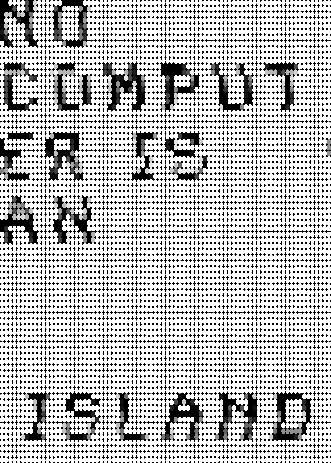On the first day of Graduate Studio, the MGD students were given a series of “provocations” to respond to in groups of three. These provocations were, by design, open-ended, begging to be developed in any number of directions. My group’s provocation: How do (have) technological networks–inclusive of the “internet of things”–affect/impact the work of graphic designers? has inspired an exploration of different topics with fascinating implications.
One of the many rabbit holes I found myself in while researching for this project was in the field of Computational Creativity. A cousin to Generative Design, AI and Cognitive Psychology, Computational Creativity is the idea that through algorithmic means, a computer system (or systems) can generate an output in the same way that humans are able to produce or think creatively. Certainly this is not a new phenomenon; many such projects have experimented with this idea for over 40 years (see Harold Cohen’s AARON).
What was particularly interesting to me were concepts described by Margaret Boden in her books and articles on mechanics of creativity. In her essay Creativity and Artificial Evolution, Boden makes the point that in order for a computer to appear creative it must exhibit transformative creativity (as opposed to combinational or exploratory types) and be linked to other systems that provoke true genetic variation within the network (Boden, 1998). Even with these criteria met, the computer’s “creative” output must be weighed against an established value system (Ibid, 1998). The things the computer makes must be meaningful, but meaningful to whom (or what)?
In improving ourselves towards becoming better designers, we are often asked to formalize our tactics to elicit a creative performance. If we wish to better understand this amorphous ability in rational terms, a strategy may be to follow these “creative” programs, taking queues from their construction and future refinements. It strikes me as very significant that individual programs need to be connected to others in order for a semblance of creativity to emerge. Perhaps, while it does not account for the value of the outcome, these kinds of networked systems provide a metaphor for our own creative work and how we perceive others as integral to our process.
REFERENCES
Ray Kurzweil interviews Harold Cohen. The Age of Intelligent Machines. AIMS Media, 1987.
Boden, Margaret A. “Creativity and Artificial Intelligence.” Artificial Intelligence, vol. 103, no. 1-2, 1998, pp. 347–356., doi:10.1016/s0004-3702(98)00055-1.
Boden, Margaret A. The Creative Mind: Myths and Mechanisms. Routledge, 2005.

